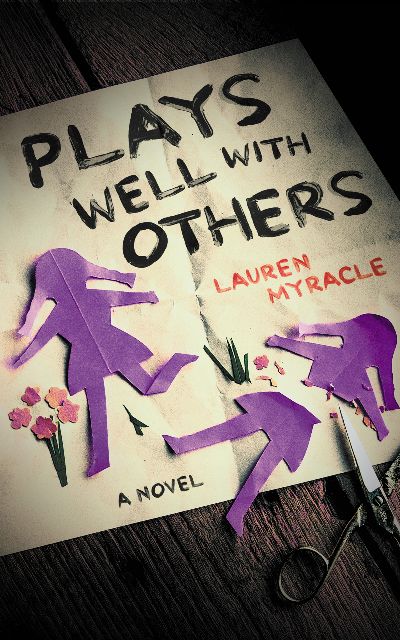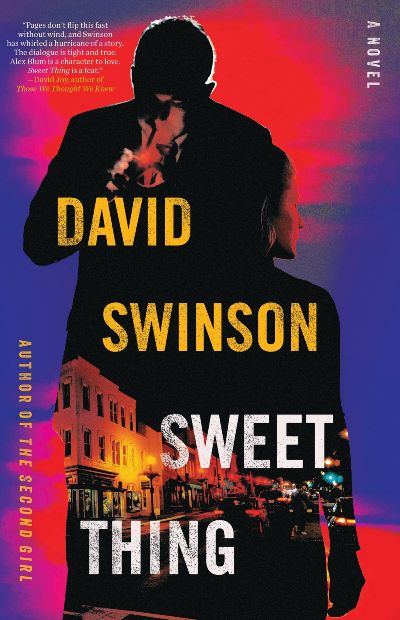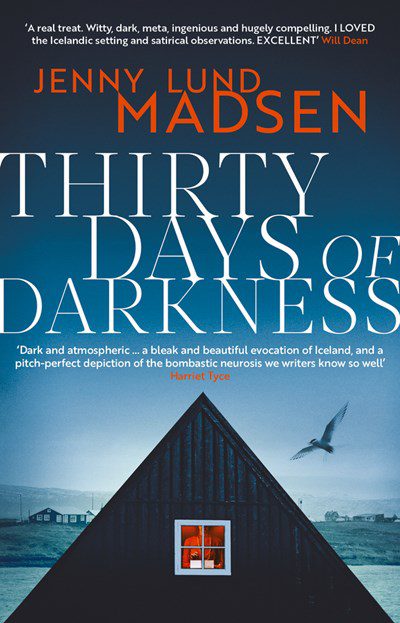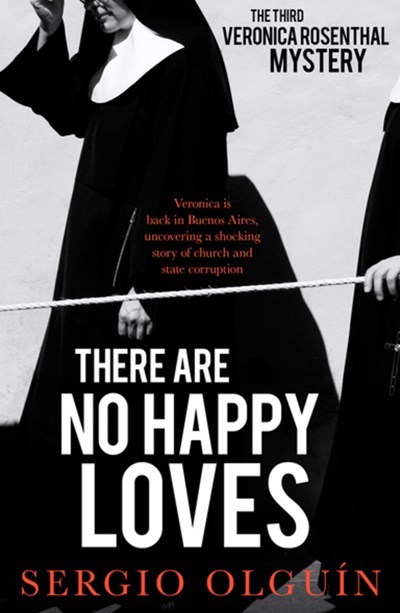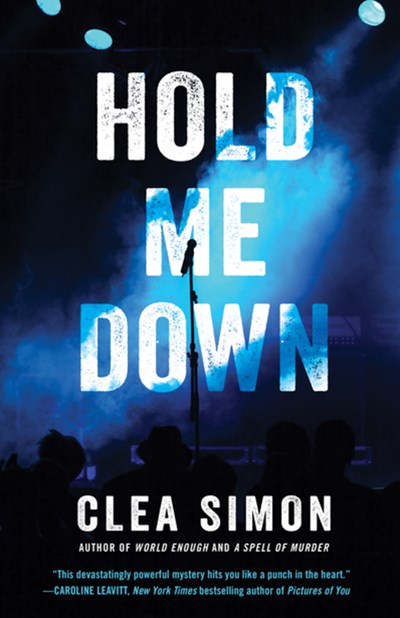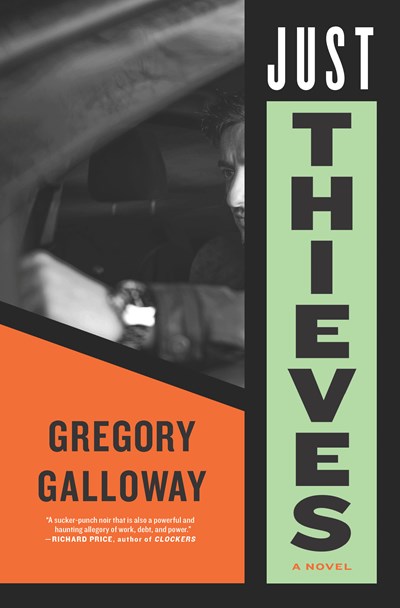You won’t find any members of organized crime here. Nor are the characters locked on a Scottish island or seeking a cozy murderer who has their community petrified. In fact, men have practically no roles in this book. And who needs them? The small group of suburban women who populate this novel are terrifying enough. Let’s start out with Jake, who a year ago endured her then-bestie posting their most intimate correspondence on social media. The result? Jake lost everything: job, house, and, most importantly, her husband. After a bit of sulking and trying to live down her past, Jake is back—she settles into a charming bungalow—and gets ready to retaliate. But this time she has a new friend with her, Mabel, who has her own set of problems. The two join up to seek revenge, although the real victims turn out to be the kids, who find themselves in the cross-fires (for real!). Is anyone in this terrifying community without a grievance? A compulsive domestic thriller that is as dark as it is dangerous.
Noir
On New Year’s Day 1985, as the countdown to Ronald Reagan’s second presidential inauguration begins, Turnip Coogan, in custody for the murder of real estate developer Randall Hubbard, falls from the roof of the courthouse in downtown Meridian, Mississippi. It may be morning in the rest of America, but that Reaganite optimism has bypassed the state’s “Queen City,” where strip malls developed by the late Hubbard have “sucked the life out of the city’s downtown” and its convenient location between New Orleans and Atlanta has made Meridian “a vital pit stop in the loosely affiliated crime belt of the Deep South.” Knowing of her son’s connection to the notorious Dixie Mafia, Lenora Coogan is convinced that his death was neither an accident nor a suicide and hires Black cop-turned-private investigator Clementine Baldwin and her white partner, Dixon Hicks, to find the “sons of bitches who killed him.” Complicating the investigation is the still-jailed Odette Hubbard, who had recruited Turnip to kill her husband and then canceled the hit job. She wants Clem and Dixon to identify the real killer, a request that puts a target on Clem’s back. Jim Crow laws may be a thing of the past, but Clem still must battle old-fashioned racism as she goes after the city’s powerbrokers. Wright’s (American Pop) Southern noir introduces a compelling, complex, bourbon-loving sleuth who both loathes and loves her hometown. Her budding friendship with Dixon will have readers anticipating their next crime-solving adventure.
Washington, DC homicide detective Alex Blum is an in-between sort of cop. He’s not jaded, but he’s used to the horror he sees on the job. He knows that, unsexy as it is, procedure gets things done, although he can cut corners when it suits. But after he’s called to a murder scene and finds that the dead man, Chris Doyle, knew one of Blum’s informants, Artie Holland, Blum throws procedure and even personal beliefs to the wind. The informant is missing—in his world as a drug dealer, probably dead, but we’ll see—but his girlfriend, Celeste, is still in his home. She and Blum take up a dangerous relationship, one that must be hidden from both his job and Artie’s cohort, who wouldn’t like a cop taking Artie’s place. Swinson’s dialog is a highlight here. The characters, from the medical examiner and cops to desperate Celeste and the dancers at a topless bar—one of Artie’s haunts—all talk us through seedy and horrible events while the rumored Y2K disaster looms and Blum edges further toward his own destruction. Swinson’s unusual ending tops the surprises in this rough, realistic noir.
Lennon, who has always played with a range of genres in his literary fiction (Broken River, Familiar, Mailman) now dips his pen into more commercial waters with the same inventive, adventurous flair. His new thriller, first in a series, revolves around twins (fraternal, not identical) Jane and Lila Pool. Thirty-five-year-old Jane leads a quiet suburban life in upstate New York, working in a dead-end administrative job at the local college, checking on her absent-minded professor father, and trying to parent adolescent Chloe despite the obnoxious interference of her disapproving mother-in-law. But her comfortable, if boring and unsatisfying, existence is turned upside down when she receives an encrypted email in the guise of spam from her long-estranged sibling. Lila has found their mother, who abandoned the girls 20 years ago, and she wants Jane to come with her to track and confront the wayward Anabel, who may or may not be a CIA agent-turned-drug-queen-pin. As the sisters embark on a whirlwind journey that eventually takes them down to Central America, alternating chapters recount the twins’ lonely, isolated childhood and teenage years as they spy on their distant and remote mother, savoring the few moments of kindness she shows them (“the marvelous, elusive feeling of their mother’s attention”), until Anabel’s final disappearance and an unexpected act of violence propel the girls on a traumatic road trip of escalating bad decisions. Along the way, readers discover who the true hard girl is. Mixing elements of a chase novel with an espionage thriller, this is also a touching story of sisterhood and motherhood in all their complications. Despite a muddled climax, Lennon’s well-written mashup of Where’d You Go, Bernadette and Thelma and Louise, but with a happier ending, will appeal to his fans and attract new readers.
How often do you hear the phrase “comic Nordic Noir”? I’m guessing not often. Yet that’s exactly what Madson delivers in this delightful/terrifying novel that parodies the publishing industry while also taking on a real, live murder case. Hannah is one of Denmark’s most successful literary authors, even if no one actually reads her. Forced by her editor to attend a book convention—snobbish Hannah abhors these sorts of things—she manages to get into an argument with crime writer Jørn Jensen, Denmark’s James Patterson. In the end, she agrees to Jensen’s challenge to write a crime novel in one month. Why not? All she’s doing is facing a nasty case of writer’s block while day drinking. To keep her focused, her editor bundles her off to the rural, coastal Icelandic town of Húsafjörður, where Hannah lives with an older woman, Ella. Hannah’s take on life in Húsafjörður is wonderfully droll—indeed, the town and its cast of characters would make the perfect setting for a cozy. But things take a more violent turn when Ella’s nephew Thor drowns, likely murdered. Faced with a completely incompetent police officer, Hannah can’t help but take on the investigation herself. And best of all, the sleuthing will let her gather all the information she needs to write her mystery. If, of course, she survives. For fans of Anthony Horowitz.
What a wild ride this book is. The third in Olguin’s series set in Buenos Aires, it features the tough-hitting, brazen, flawed, but brilliant journalist Verónica Rosenthal, who loves her whiskey, her lapdog, her ex-boyfriend, and great sex, preferably with strangers. As the novel opens, there is a horrific car crash followed by an explosion, leaving one survivor, Darío, who becomes convinced that his wife and child didn’t die in the conflagration but survived and ran away. Is it possible? Later, a truck is pulled over in Buenos Aires, thought to contain drugs. But the cache is far more gruesome: a load of human body parts. Verónica pursues the missing wife and child, ultimately publishing a feature about a right-wing Catholic organization, the Christian Home Movement, which took young children from poor or single mothers and placed them in well-off Catholic families. At the same time, and unknown to Verónica, her ex-boyfriend is after the body smugglers, and eventually the two storylines converge, as do the lovers. But don’t for one minute think this is some linear thriller. This book ricochets from family drama to Argentinian history to the picaresque (Verónica in nun’s garb, infiltrating a convent) to the deeply emotional. While this can be read as a stand-alone, this series builds on itself wonderfully.
This is turning out to be one of the most unique, captivating, and above all emotionally engaging crime fiction series being published. Happy Doll—yes, that’s his real name—is 50-ish, ex-military, and a former LAPD cop who lost his PI license and now calls himself a “security consultant.” Yes, Doll has many of the noirish trappings of your classic LA detective, from his worn-down office to his status as a regular at a dive bar. But he’s also a fledgling Buddhist who’s in love with George, a half-Chihuahua, half-terrier mix, is in psychotherapy, and is incredibly generous to those he comes across—provided they’re not trying to kill him. In this story, Doll is approached by a young woman to search for her mother, Iris Candle, who’s likely to be homeless. Candle and Doll, it turns out, were lovers years ago, and Doll can’t turn down an opportunity to see her again. After a week of searching, Doll finally locates Candle—worn down by drugs and years of living on the streets—and their reunion is one of the most poignant passages I’ve read in years. It also sets off the book’s real narrative, complete with some horrific, but highly entertaining, violence and a quest that brings Doll to the edge. As much as I love Ames’ novels and comic memoirs, Happy Doll is his most innovative and successful character yet. Fans of aged, semi-hard-boiled, humorous Los Angeles detectives will also enjoy Andy Weinberger’s The Kindness of Strangers.
Take a trip back to early 2000s Brooklyn in this work of literary noir that lurks on the edges of the art world. Noir novels present an investigator who’s down on his or her luck, and here it’s Dwyer Murphy—yes, the main character has the same name as the author—a former corporate lawyer who couldn’t take the hours, the billing in six-minute increments, or the colleagues. Now he’s going it alone, but he needs the odd lucrative job (even the odd shady one) to stay afloat. He takes a sad case: one party in an acrimonious divorce wants him to try to buy books off her husband; she suspects that he’s selling some of her valuable, inherited volumes and needs the proof. Two things are strange: the “books” are esoteric, early American legal pamphlets such as “Confessions of Tom Mansfield who Corrupted and Murdered His Servant,” which Dwyer had no idea were collectibles, let alone worth taking risks over. And then he faces being sued by the wife because he’s ruining her husband’s reputation. There’s no end to the rich-people twistedness here, which is both incredible and all-too believable. That’s enjoyable enough, but best is the slow-burn, quirky trip with the steadfast Dwyer, who puts one foot in front of the other until he figures out what’s going on. A kinda, sorta Thelma-and-Louise ending caps the saga, but leaves room to wonder what’s next for the lovable Dwyer.
Simon, prolific author of the Witch Cats of Cambridge series, here mines her past as a rock critic. The tale looks at former rockers visiting their own past when they reunite for a benefit after former bandmate Aimee dies. During the concert, Gal Raver, frontwoman of the band and of the book, sees a familiar face in the crowd. It’s TK, the band’s old roadie, who’s later found dead in an alleyway behind the club. Walter, Aimee’s husband, is charged with murdering TK and seems curiously apathetic when Gal tries to help him fight the accusation. Finding out what happened involves numerous murky flashbacks to Gal’s past as a messy, angry drug and alcohol addict, and her behavior and the battle for fleeting success give the book a feeling of darkness. Simon’s evocative writing puts readers inside sweaty clubs that stink of beer and vomit (so much vomit!), and reaches its first height when describing the moment the fledgling band finally gels onstage. The music fades in the last part of the novel, which explores hard truths and the differing ways they can be remembered, with Simon’s depiction of Gal’s slowly unfurling memories a second high point. Note that rape is described here in some detail. For readers who enjoy dark stories and fans of music-themed mysteries.
Frank’s day job is as a thief, but he believes himself a philosopher at heart, and uses his constant learning and contemplation to justify his ways. Ownership isn’t real anyway, he tells his partner, Rick, during their long stakeouts. There are hints that the two are a couple, but love or any kind of emotion seems beyond Rick, whose ennui and lack of agency sees him take on a life of crime because, whatever, it’s all the same. Mr. Froehmer, a crime boss who will remind readers of Breaking Bad’s Mr. Fring—aloof, sparing of details—assigns the partners seemingly meaningless things to steal, and they’re off on a trajectory that eventually sees Rick forced to take hold of the reins when his mentor can no longer make their decisions. Readers will love to hate Denise, Rick’s shifty ex, and will cheer Rick as an unlikely hero when he shakes off the blahs and takes charge of what matters. Fans of dialog-rich novels are the audience for this thoughtful noir from Galloway (Careful and Other Stories; The 39 Deaths of Adam Strand).
- 1
- 2

